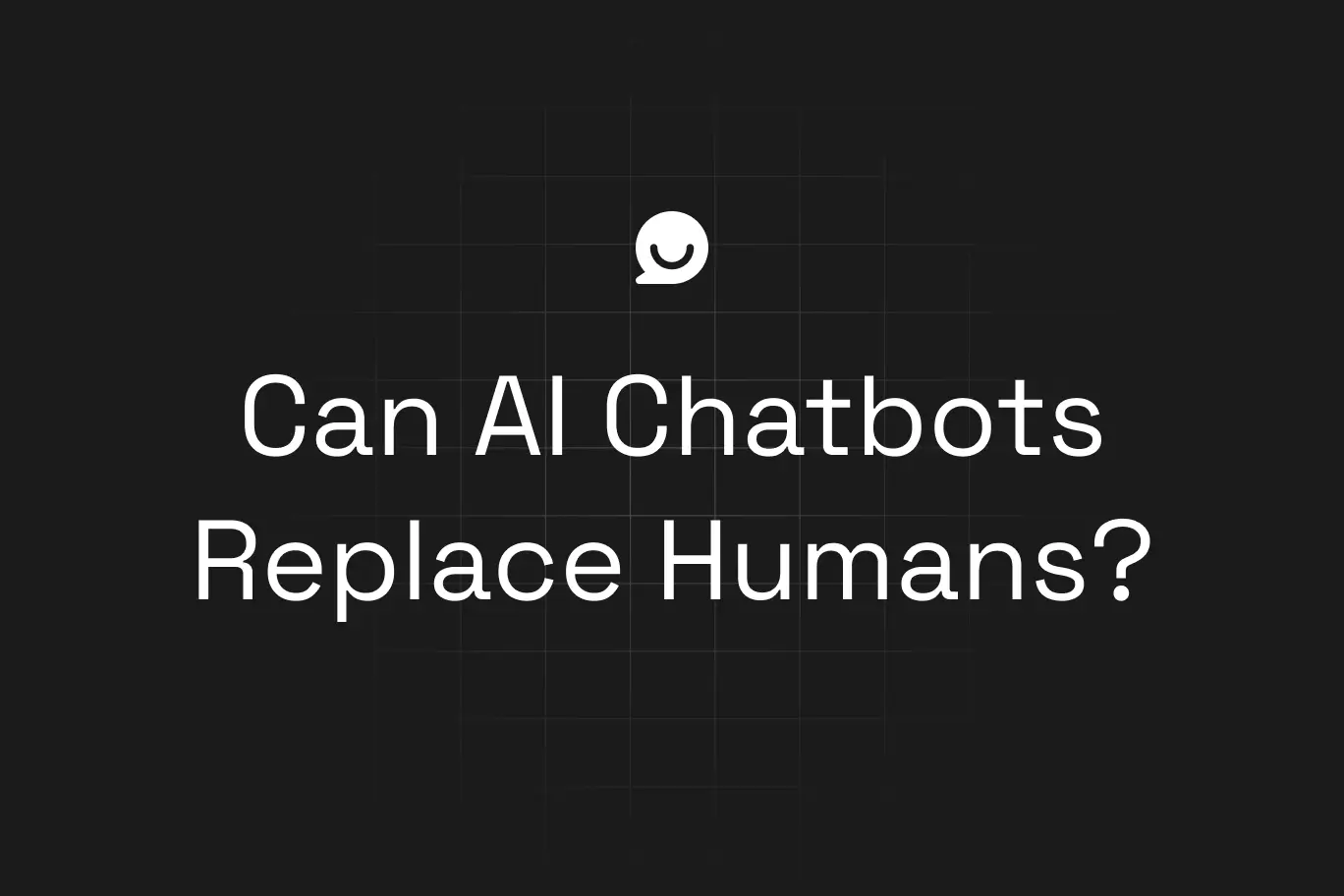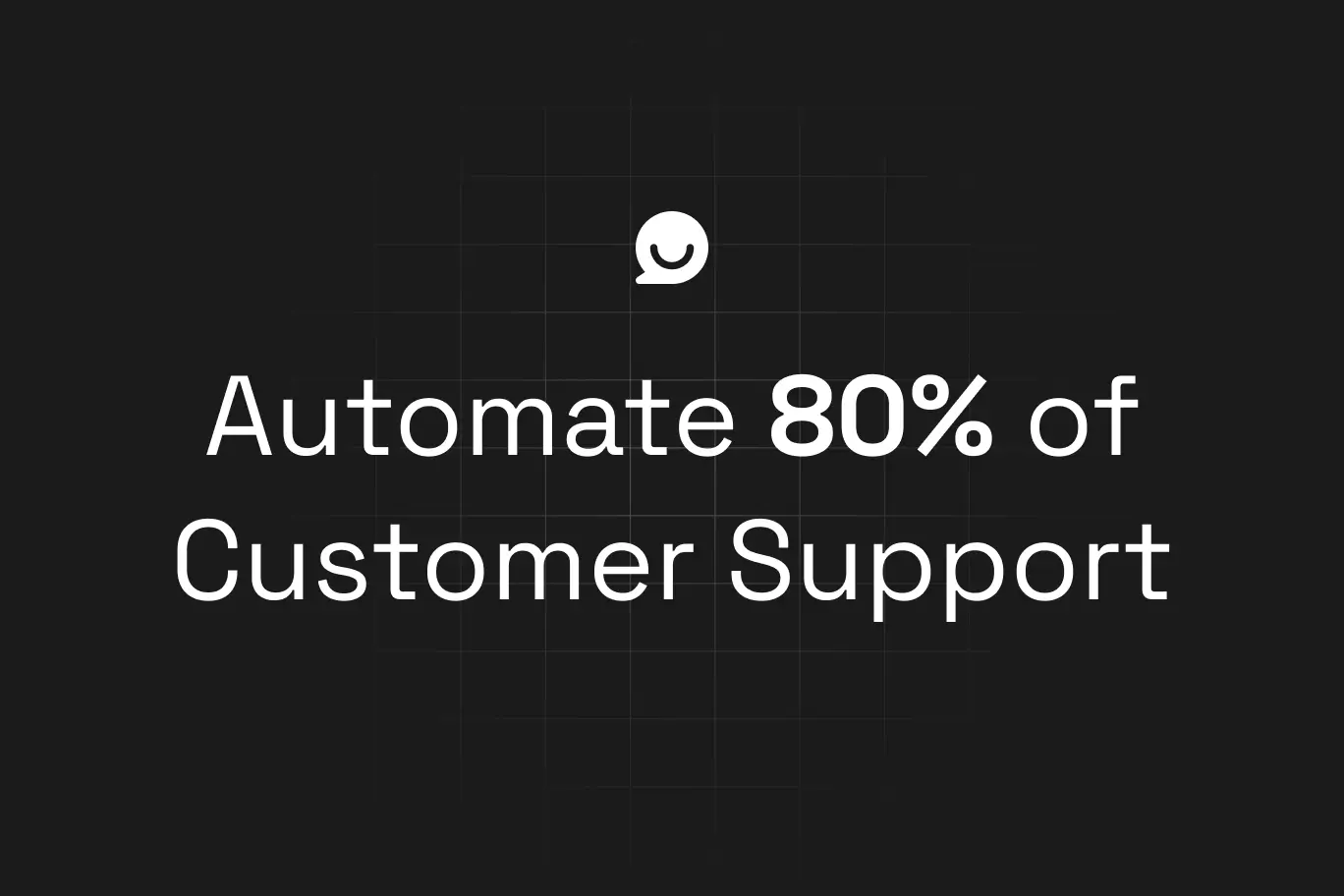Can AI Chatbots Replace Humans?
Worried robots are coming for your job? Here’s the truth about AI, automation, and customer service — and why smart businesses use both humans and chatbots to win.
— Billy

The Big Fear: Are the Robots Coming for Your Job?
It’s a question that’s been lurking in headlines — and in the back of our minds — for years: Are the robots coming to take our jobs?
It’s no wonder this fear has taken root. From dystopian movies like The Terminator to clickbait news stories about factories replacing workers with machines, the narrative has been loud and dramatic: robots = job killers. But here’s the truth — the reality is much less sinister, and far more nuanced.
First, let’s talk about why this fear feels so real. Humans are wired to notice threats, even imagined ones. When we hear about AI doing things faster, cheaper, and without needing a lunch break, our brains leap to the worst-case scenario. This isn’t just a Hollywood effect — it’s a survival instinct. Throw in the fact that technology evolves much faster than we adapt emotionally, and you’ve got a perfect recipe for anxiety.
We’ve been here before, by the way. When the automobile replaced the horse-drawn carriage, entire industries disappeared — but entirely new ones were born. Same with the rise of computers, email, and even ATMs. People assumed jobs would vanish, but in reality, jobs evolved. A bank teller didn’t disappear because of ATMs; they started helping customers with more meaningful, complex needs instead of counting cash all day.
The same is true for AI today. Yes, chatbots and automation will replace certain tasks — especially the boring, repetitive ones that no one actually enjoys doing. But replacing an entire human being? That’s much harder. Humans bring emotional intelligence, creativity, and judgment that no algorithm can fully replicate.
So where does that leave you? Honestly, in a pretty good spot — if you’re willing to adapt. Businesses that embrace AI as a tool, not a threat, tend to grow faster and reduce burnout for their teams. And employees who learn to work alongside AI end up more valuable, not less.
In short: the robots aren’t coming for your job — but they are coming for the parts of it you probably hate. And that’s not something to fear — it’s something to welcome.

What Chatbots Actually Do (and What They Can’t)
It’s easy to think of chatbots as magical little creatures that can handle anything you throw at them — like a customer service unicorn that never sleeps. But here’s the reality: modern AI chatbots, even the best ones (like Billy.Chat), are incredibly capable in specific ways… and hilariously bad in others.
Let’s start with what they actually do well.
Chatbots shine in situations where the question or task is predictable. Think about the dozens of times a day someone asks: “What are your opening hours?” or “How do I book an appointment?” or “Where’s my order?” A chatbot can field those kinds of questions instantly — and consistently — no matter how many people are asking at the same time.
They also excel at gathering basic information. Want to qualify a lead by asking for their name, email, and what service they’re interested in? A chatbot can do that without breaking a sweat. Want it to confirm a booking or send a customer a link to pay? Done.
This is why Billy.Chat is so effective: it takes the boring, repetitive, and frankly soul-sucking parts of customer communication off your plate — and does them fast, 24/7.
But here’s the flip side: chatbots are not mind-readers. They don’t have intuition, and they definitely don’t feel things. If a customer shows up upset because their grandmother’s birthday cake never arrived and they’re nearly in tears — that’s not where you want AI running the show.
AI also struggles with nuance. If someone phrases a question in a very odd or ambiguous way, the bot may get confused. And while today’s AI is astonishingly good at mimicking natural conversation, it still can’t truly understand context the way a human can.
So no, your chatbot won’t replace your team. Instead, it complements them. It clears the easy stuff off their desks so they can focus on the things that require judgment, empathy, or creativity.
Think of it like this: a chatbot is like a really efficient assistant who never complains and never sleeps — but it still needs a boss to handle the messy, unpredictable human moments.
Why Businesses Still Need Humans (Even with AI)
With all the hype about AI, it’s tempting to believe you can just “set it and forget it.” Plug in a chatbot, fire half your staff, and watch the profits roll in, right?
Not so fast.
Even the best AI is only as good as the scenarios it’s been trained for — and life is full of messy, unplanned moments. There are still plenty of situations where a human touch isn’t just preferable, it’s non-negotiable.
Let’s start with empathy. When a customer is upset — not just mildly annoyed, but truly distressed — they want to feel heard. They need someone who can read between the lines, pick up on their tone, and reassure them in a way that feels personal and authentic. A chatbot might say, “I’m sorry for the inconvenience,” but a human can actually mean it — and adjust their response based on subtle cues.
Then there’s judgment. Humans excel at making decisions when the path isn’t clear. A client asks for a custom solution? A vendor wants to renegotiate terms? These situations require creativity and critical thinking — skills no AI has mastered yet.
Creativity itself is another arena where humans win, hands down. If your business thrives on creating unique, tailored experiences — whether that’s writing copy, crafting strategy, or even designing a custom package for a client — you need humans for that.
You’ve probably seen this play out in your own life. Ever tried to explain a complex, emotional situation to a support chatbot, only to get a robotic, irrelevant answer? It feels frustrating and impersonal — the opposite of good service.
Smart businesses understand this. They don’t see AI as a replacement but as a teammate. The chatbot handles the predictable, high-volume, repetitive stuff, freeing humans to focus on the delicate, high-value interactions that really build loyalty and trust.
So don’t think of AI as a threat to your team. Think of it as an upgrade to your customer experience. Let the bots do the grunt work, and let your people shine where it really matters — connecting, creating, and caring in ways only humans can.
After all, business isn’t just about being fast or efficient. It’s about relationships. And at the end of the day, nothing builds a relationship better than a real human being who actually gives a damn.
How Smart Businesses Combine Humans + AI
Here’s the thing about smart businesses: they don’t treat AI and humans as rivals. They treat them as teammates.
Because the real magic happens when you stop thinking in binary terms — “humans or AI” — and start thinking in terms of a partnership: “humans with AI.”
Why? Because your team’s time is valuable. And most of them didn’t sign up to spend their days answering the same five questions over and over. That’s like hiring a Michelin-star chef to peel potatoes all day. Sure, they can, but what a waste of talent.
This is where chatbots come in — and where the smartest businesses separate themselves from the pack.
Let’s start with what chatbots are good at: repetitive, high-volume, predictable tasks. Customers asking when you open. Where you’re located. How to book. What your cancellation policy is. Whether you have parking. (You can practically hear your team sighing just reading this list.)
These are the things that — while important — add no creative or emotional value. They just need to be answered quickly and accurately. And a well-trained chatbot like Billy.Chat can do exactly that, around the clock, without coffee breaks, and with infinite patience.
So what does that leave your human team to do?
The good stuff. The high-leverage work. The conversations that actually move the needle for your business — upselling a nervous client, smoothing over a delicate mistake, suggesting tailored solutions, or simply making someone feel heard and valued in a way no robot can replicate.
For example: a cosmetic clinic we worked with put Billy.Chat on their site to handle appointment bookings and FAQs. Their team suddenly had hours back each week — which they used to follow up with leads personally, book more consultations, and even launch a referral program. Their revenue didn’t just stay intact; it grew, because they finally had the bandwidth to focus on strategy instead of survival.
It’s not just about saving time — it’s about reallocating your team’s energy where it counts.
One of the biggest mistakes businesses make is forcing their people into low-value work out of habit or fear of change. Meanwhile, their competitors who embrace AI are freeing up their people to do what only people can do — connect, persuade, and innovate.
The winning formula isn’t complicated: let the chatbot handle the questions with obvious answers, and let your humans handle the questions that matter.
Think of it like a relay race — the bot runs the first, straight stretch, and then hands off to your team for the tricky curves and the final sprint.
In short, AI isn’t here to replace your humans — it’s here to let them do their best work. And that’s what smart businesses understand: it’s not about working harder or cheaper, it’s about working smarter.
Real Stories: How Businesses Use AI Without Firing Everyone
Whenever the topic of AI comes up, someone inevitably asks, “So… who gets fired?”
It’s a fair question. The fear that introducing automation means cutting staff is baked into our collective imagination. But in reality, many of the businesses we work with have found that adding AI actually made their teams happier, more productive, and even more profitable — with no layoffs in sight.
Let me give you a few real-world examples to make it concrete.
We worked with a boutique law firm that was drowning in client inquiries. Every day their paralegal spent hours answering the same repetitive emails: “How much does it cost for a consultation?” “What documents do I need to bring?” “Do you handle divorce cases?” It was eating up so much of her time that she barely had a chance to help the lawyers with actual casework.
Enter Billy.Chat. Within 24 hours, the chatbot was live on their site, handling all the predictable questions and booking consultations. The paralegal? Freed up to support clients in person and help the lawyers prep cases — which is what she was hired for in the first place. No one lost their job; in fact, the team became more effective and less stressed.
Then there’s the cosmetic clinic. They were struggling to keep up with social media messages — Facebook, Instagram, WhatsApp — on top of calls and emails. Their staff felt like they were always behind and missing leads. Once we deployed Billy.Chat, it started answering messages instantly, even outside office hours, and booking appointments automatically. Staff morale shot up because they could focus on delivering amazing treatments instead of chasing messages all day.
Or take the real estate agency. Their agents were spending hours answering basic questions about listings, open houses, and how to schedule showings. Billy.Chat stepped in to handle those FAQs and even pre-qualified leads before handing them off to an agent. Agents suddenly had more time to close deals instead of playing secretary.
The point? In every case, the business owner didn’t use AI to shrink their team — they used it to let their people shine.
These businesses didn’t see AI as a threat. They saw it as a teammate — one who works tirelessly, never complains, and frees everyone else to do the work that really matters.
Adding AI doesn’t have to mean cutting jobs. Done right, it means cutting wasted effort. And that’s a win for everyone.

The Hidden Cost of Ignoring Automation
If you think ignoring AI means staying “safe,” you might want to think again.
Because while you’re clinging to business as usual, the world around you is changing — and your competitors are quietly getting faster, more efficient, and more appealing to your customers.
Let’s talk about what really happens when you resist automation.
First, you start missing leads. A lot of them. Today’s customers expect fast responses — sometimes within minutes. If you don’t answer their question or book their appointment quickly, they’ll just move on to someone who does. A chatbot like Billy.Chat can handle that pressure for you, replying instantly and keeping prospects engaged. Without it? Every delayed reply is a potential client lost to a competitor.
Second, your team burns out. If your staff spends hours every day answering the same repetitive questions or switching between five different messaging platforms, they’re not doing their best work — they’re just treading water. That kind of grind is exhausting, demoralizing, and often leads to turnover. People want to feel useful, not stuck in a loop of answering “What time do you open?” 50 times a day.
And then there’s your customer experience. Without automation, customers wait longer for replies. They get inconsistent answers depending on who’s on shift. And they may even feel neglected — especially if they reach out after hours and no one’s there to help.
One of our clients put it perfectly: “We thought ignoring AI was safer than messing with our process. But we realized we were losing business to competitors who had already figured it out.”
There’s also the financial cost. Every lead you miss is money left on the table. Every employee stuck answering FAQs instead of closing sales is untapped potential. Every customer who leaves because they felt ignored is a lost lifetime value.
Here’s the kicker — embracing automation doesn’t even have to be expensive or complicated. With a service like Billy.Chat, you can have a live, trained chatbot up and running in 24 hours. You don’t even have to lift a finger to get started.
So yes, staying the same might feel comfortable — but it’s not free. The hidden costs — in missed opportunities, stressed teams, and unhappy customers — add up fast.
Smart businesses know this. They don’t resist change. They embrace it — and come out ahead.
Ready to Let AI Help (Not Replace) Your Team?
By now, you’ve probably noticed a pattern: the smartest businesses aren’t asking if they should use AI — they’re asking how.
Because once you see AI for what it really is — a powerful assistant that never sleeps, never forgets, and never rolls its eyes — you stop worrying about it replacing your people. Instead, you start seeing how it can support them.
That’s exactly what Billy.Chat was built for.
We designed it for business owners who are tired of wasting time on repetitive conversations, tired of watching leads slip away, and tired of staff feeling overwhelmed by low-value tasks. The best part? You don’t need to be “techie” or spend weeks figuring it out.
Here’s how it works:
You tell us about your business. We listen, learn, and build a fully trained, custom chatbot — one that knows your services, your tone of voice, and your most common customer questions. Within 24 hours, your demo is live and working on your site.
No confusing setup. No clunky templates. No hours wasted trying to make it sound human. We handle all of it — and we even give you a 14-day trial so you can see how it feels before you commit.
During the trial, your team can watch it in action, peek at conversations in the dashboard, and see exactly how many leads and hours it saves you.
You’ll quickly notice the shift: your staff has more time, customers get faster responses, and you stop losing business to slow replies or missed messages.
At the end of the day, Billy.Chat isn’t here to replace anyone. It’s here to take the weight off your team’s shoulders so they can do what humans do best — build trust, close deals, and deliver unforgettable service.
So, are you ready to let AI help your business (without replacing your people)? Because we’re ready to build your chatbot — and we can have it live by tomorrow.
FAQ About AI Chatbots and Customer Service
Can AI chatbots fully replace human employees?
Not really. AI chatbots can take over repetitive, predictable tasks, but humans are still needed for nuanced, emotional, or creative interactions.
What kinds of customer service tasks are best suited for AI?
Answering FAQs, collecting basic info, booking appointments, and giving quick updates — the stuff that feels like déjà vu for your team.
When do customers actually prefer humans?
When they’re angry, confused, or have a unique situation. People still want empathy and creativity when things get messy.
Are chatbots better at handling high volumes than humans?
Absolutely. A chatbot can answer dozens (or hundreds) of customers simultaneously without needing coffee breaks or calling in sick.
Do chatbots make customer service impersonal?
Not if done right. When trained properly, they can feel friendly and helpful — and free up your humans to deliver personal touches where they matter most.
Can chatbots and humans work together effectively?
Yes — the smartest businesses use bots to handle the routine stuff and humans for the high-value conversations. It’s not a replacement; it’s a partnership.
Will using a chatbot hurt my brand’s reputation?
Only if you rely on it for everything. When paired with human oversight and good training, a chatbot can actually enhance your brand by responding quickly and professionally.
Is it expensive to implement an AI chatbot?
Not necessarily. Done-for-you services like Billy.Chat make it affordable by handling the setup, training, and management for you.
What’s the risk of NOT using AI in customer service?
Your team stays bogged down in repetitive tasks, you miss leads because no one answers fast enough, and your competitors who embrace AI start eating your lunch.
How can I start experimenting with chatbots without committing too much?
Look for services that offer a trial or demo (like Billy.Chat does), so you can see how it works for your business before making a decision.

